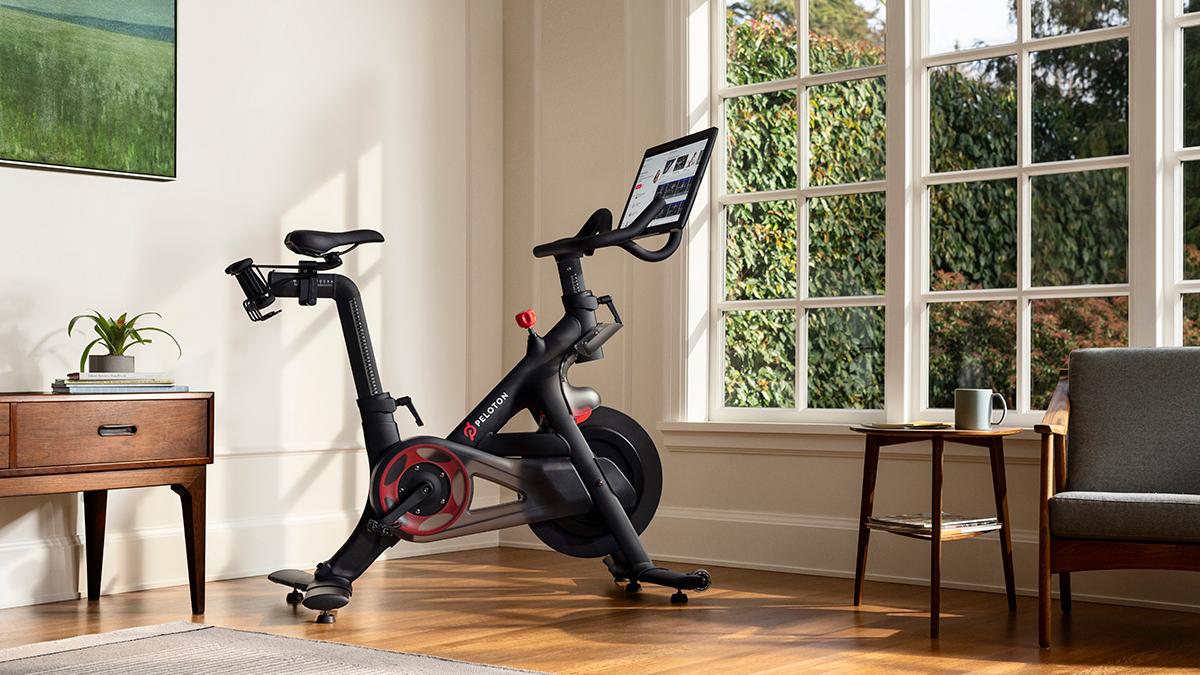
View on Instagram at https://www.instagram.com/p/CDdLtruJg1C/

View on Instagram at https://www.instagram.com/p/CDdLtruJg1C/

Among the many reasons why it is challenging to be a founder, there is this quirk of the venture business — there are a lot of investors, and it is tough to figure out who is the right one.
One axis of the decision-making model is what I think of as Momentum vs. Conviction.
One way you can identify the momentum species is if they ask the magic question: “Who else is in the deal/round?”
Momentum investors are driven by the trend du jour. They often show up when:
It seems obvious that this isn’t the kind of investor a founder wants. But in the moment, it is really difficult to say no to someone who is persistent, especially when you’ve been laboring away at your product on starvation wages for years. The attention can also be fun. For the moment, everything’s great, you’re hot, and dollars are flying at you.
The question in your mind may be: So what? What if they’re in the company for the wrong reasons?
The answers unfortunately only emerge over time:
Momentum isn’t the only way to make investing decisions. Someone could also invest in your startup based on the conviction that your company represents the best approach in a space they understand and care about. Here are some of the signals of conviction investing:
It’s fantastic to be a hot company, but if the music stops, and if you cease being the next hot thing — you want a conviction investor at the table with you.

View on Instagram at https://www.instagram.com/p/CDK1jodpIrk/

No one would call Maynard Webb a pussycat. He joined eBay when the technical infrastructure was failing. He was critical to fixing it and making downtime a thing of the past. Anyone who has worked for him would say he was their toughest boss. He was full of pithy Maynardisms that all basically meant, “Stop whining and get back to work.” He was a force to be reckoned with.
Many years ago, in one of our ongoing mentoring sessions, Maynard said something like, “Whenever you’re faced with a career choice, pick the toughest challenge.”
He explained that if you choose an easy problem, you know you can fix it. But, many other people in the world can fix the same problem—there’s nothing unique about the accomplishment. If you choose a really tough problem, you may fail, but if you succeed, then you’ve done something pretty darn hard. That would be rare air.
This is one of those pieces of advice that sounds great. It’s aspirational; it’s the hero’s journey; it’s inspirational. From afar, it all looks and sounds glorious, but the daily reality can be painful. And the chance of failure is extremely high. You’ll work long, hard hours for years, put your lifeblood into something, and likely fail. Not easy.
Founders have self-selected into the toughest path in front of them. The alternatives abound. It would be so much easier to go work somewhere else—somewhere where you’re a member of a team, where many hands make light work, where a decision will not fundamentally affect the success or failure of the company, where the buck doesn’t stop with you.
But the small chance of success is alluring. What if you’re the one to pull it off? You crush that job, or you create that unique company. The highs of that are incredible.
And that is why we are all in tech.

View on Instagram at https://www.instagram.com/p/CC2u8Cqpd0L/

One of my early lessons in screenwriting was to focus on the character—motivations, personality, drives—and not external characteristics. It’s tempting to specify that the leading lady is blonde, petite, or whatever. And it’s okay to envision the character while writing, but we’re taught to avoid specifying detailed external appearance in casting.
The reason is that sometimes, the best casting decision is the one that’s least expected. You might have an image in your head of the character, but the best actor—the person who is most convincing and does an incredible job—might look very different from your mental image. Let’s say your character is written as a seductress, but the best actor for that role could be more of a plain Jane. That adds a lot to the nuance and depth to the story. A more regular-looking person being a seductress is so much more interesting than the hottest person on earth being a seductress. The film Snowpiercer was written for a mild-mannered man in a suit, but Tilda Swinton rocked the role.
During casting sessions, screenwriters and directors need to learn to set aside their mental picture, look at the actors in front of them, and reimagine the story with each person auditioning. That’s the way to cast the best actors.
Similarly, investors sometimes have a mental picture of who will be a good entrepreneur. It’s not based on looks (one hopes), but on the profile — the experiences a person “should” have had to be a great entrepreneur. VCs can sometimes be biased toward someone who’s worked at a hot company that went public, or is an engineer who can build it all, or a name-dropper who seems very connected in the ecosystem.
If investors carry around these biases in our heads, we will miss the best people. Like great actors, great entrepreneurs can come in all shapes and sizes, and from all backgrounds, all levels of work experience, ages, nationalities, and genders.
When casting an actor, the most important things to look for include:
Many of those same characteristics apply to ideal founders:
Just like the success of a film depends on casting the person who is the best actor, the success of an investment depends on casting the best founder. It requires putting aside the mental preconceptions and focusing on the person in the room (or on Zoom). Despite her youth, can she be an amazing CEO? What gives you that confidence? Her knowledge of the space? Ability to be compelling? Authenticity?
The best casting decisions happen when we are open to allowing incredible actors to show us how much better the character can be. In the same way, I try to approach every meeting with a founder with a willingness to be blown away by their vision of the world.

View on Instagram at https://www.instagram.com/p/CCmfgtRJpPL/

When I was a child, I’d get a monthly allowance. In order to get the next month’s allowance, I would have to account for how I spent or saved what was given to me, down to the paisa (the Indian version of a cent). I had a pink spiral notebook that I would show to my father in order to get a fresh infusion.
Whether our parents teach us about money or we learn it elsewhere, the overarching message is all around us: “Be careful with your money.” What if we thought about time the same way?
Let’s take some of the concepts of money and try to apply them to time.
Hoard: When a resource is precious, we hoard it. This is to give us a sense of comfort that it is there when we need it most. Hoarding started off as a synonym for saving, but has now come to be viewed as excessive, with a negative connotation. Still, when I saw this quote on a writing blog, it resonated with me:
“In order to excel at anything, and this includes writing, you must hoard the time needed to accomplish that excellence.” DL Black obviously hoards that time. Just like Michael Jordan hoarded his practice time, Mother Teresa hoarded her humanitarian time, Neil Armstrong hoarded his preparation time for the moon landing, etc. I vote you hoard that time needed for your writing Franklin. Protect it. Coddle it. Savor it. It’s yours and you need it to finish your screenplay.
Unlike money, time exists mostly in the present. What does it mean to hoard time? Here’s how I try to do it – working backwards from my goals for the year, I block off time on my calendar to move the related projects forward. It’s working with some success (for example, writing is one of the goals for this year). When it is not working, you could look at your priorities and determine whether you are giving your most important ones the time they need.
Invest/compound: The goal here is for $x today to become $5x or $100x tomorrow. What can you do with your time to create more value later? If you’re a founder, it is worth thinking of what will give you that 5x return. Build those things that will make it harder for your competition to catch up and for your lead to expand exponentially. Here are some other areas that are an investment in yourself that could compound:
– Writing from your unique pov makes you findable, and by creating value for others, helps you form connections with like-minded people around the world.
– Learning and pursuing your curiosity in areas that may not be popular enriches your life, just because it’s worth spending time on things that pique your interest.
– Thinking about things that may seem unrelated so that when the next idea come up, you can draw connections you might not have known existed.
– Forming genuine connections with people who stretch your ideas, expand your horizons, and leave you energized.
Diversification: By holding different kinds of monetary assets, when one asset class suffers, you do not end up at a zero. Other asset classes can carry you through. There are many ways to look at diversification from the perspective of your time: You could choose to look at it from just the perspective of your career — the whole anti-fragile career movement is big right now, and rightfully so given the year we’ve had so far. You could also look at it from the different ways that you currently spend time — work, family, friends, exercise and health. Let’s say, for example that you’re going through a rough patch on the personal front. Having your work go well can help carry you through by giving you something positive to focus on during that time. Much like money, diversification could mean not letting one aspect of your life dominate.
Opportunity cost: With money, putting your money in opportunity X means you may have to turn down opportunity Y. If you think great opportunities are ahead of you, the rational person would wait for the better investments. Unlike money, you can’t create more time in the present, and there isn’t really “saved” time you can draw from. So the opportunity cost of time is much higher than money. Doing X right now means you cannot do Y. Time is the most finite resource. Consistently asking what the opportunity cost of a choice is may help in crystalizing what really matters and what the areas of investment should be.
Giving and gifting: This is important for many people with their money, and not just for the tax break. It’s important because they want to support worthy causes. But when the dollars get higher, most people research the chosen charities to make sure that the money is being put to good use. On this one, it’s very similar with time. Apply the same principles.
IRA: In most parts of the world, the government and businesses enable people to save for their retirement by taking some money from today and investing in for the future. This money, either in 401Ks or IRAs, is money you can’t really access, but you can choose how to invest it so that it fits your risk profile and can cover your needs once you stop working. With money, you can starting saving for retirement early, but with time, what’s the right time to start thinking about when you stop working? Is it in your 50s or 60s or 70s? Is it investing a bit of time to learn a new skill you might want to use? Is it thinking through what you enjoy and starting early? I have more questions than answers for this one.
Creating optionality: One of the biggest reasons people value money is that it gives them flexibility and optionality. Having money can create more money (through investing). One would think that time would be different, but this can be true for time, too. While we can’t create time in the present, you can create high value time (and therefore options) in the future. You can add healthy years to your life by making the right decisions in the present. I don’t do this well (yet), so it’s time to make it a priority.
None of these are easy and I struggle with them on a daily basis. But this lens helps me get over FOMO, say no even when I feel some guilt, and have chunks of time to work towards the goals that matter.
I’m sure there are some other great analogies out there. I’d love to hear which ones you use in your life.

View on Instagram at https://www.instagram.com/p/CCVANonpg1s/

When investors look at companies, one of the things we try to understand is whether the company can build a moat. In tech, a moat is a conscious business design choice that allows a company to develop and maintain a sustained competitive advantage over other players in the space.
Economies of scale and network effects are two of the best-known moats. But there are others—like deep tech, etc. Today, I want to propose a new moat: hardware. I’m talking about products like Peloton, where the hardware is central to having the full experience.
In the wellness space, software solves real problems, and the app ecosystem in these spaces is thriving. These apps help with things like meditation, period tracking, sleep tracking, and exercise of all kinds. But in a crowded market like that, investors ask, “How does a company win?”
Now, when you have “just” apps in these spaces, with no connected hardware, they are fungible. To move from one app to another, you just… click. If you have paid an annual subscription, you might wait until it expires, or you might just eat the cost and try a new app regardless. With these apps, there may be UI differences or instructor differences, but the experience is largely similar. The customer choice is being made based off of relatively small differences.
As my colleagues and I have written, in a software-only space where differences are minimal, a product-led community can be a great moat. Another moat could be sales to enterprises, where a company buys the app/service as a benefit for employees. If you lock up as many companies as possible, very quickly, the employees of those companies become your customers. But this kind of lockup, while valuable, may not be driven by passion or love for the product.
So, a moat that could be longer lasting is hardware. Yes, hardware often scares VCs, because it can be complicated. You need to create processes around mailing things out, dealing with returns, production challenges, and more. There seems to be an endless list of issues.
However, hardware has changed over the past few years, becoming easier to manage than it was 10 years ago. A whole ecosystem of companies has emerged to support hardware companies with many of the logistical issues. And engineers, product people, designers, and marketers who have built and shipped multiple versions of good consumer hardware are available in the market.
In a crowded software market, hardware can be your moat.
The most successful of these companies is Peloton. If you buy a bike (or presumably a Tread), to just get your hardware to turn on, you have to pay Peloton $39 a month for a subscription. And while your parents’ generation ended up using exercise equipment mainly as a clothes horse, these new devices are a joy. They are well-designed, they are connected, they often have community elements, and they have a rich user experience that’s compelling and powerful. So, sure, much like your parents, you could turn your Peloton into a dumping ground for your shorts and t-shirts, but once you’ve bought a device that costs several thousand dollars, the additional monthly pinch of $39 is likely making sure that you are using the device. Their numbers back this up: their S1 claims 95% 12-month retention for those who buy their hardware. Even if it is a bit lower, like some analysts debate, it’s still incredibly strong. Also, just yesterday, agreeing with this point of view, Lululemon bought Mirror, a connected hardware exercise mirror, for $500M.

It is even better when the hardware gives you unique data. For example, our portfolio company Core provides your Heart Rate, your HRV, your minutes of calm, and your minutes of focus for each session. Because you are holding a device that vibrates to give you a point of focus, and that same device gives you all this data, once you’ve bought a Core, you’re unlikely to want to use anything else to meditate. Same goes for Peloton.
In addition, unlike another apps on your phone, which are all behind the black glass screen, hardware is visible. You can see your Peloton bike in your house, your Core trainer on your desk or bedside table. And by being visible, and by being well-designed, they beckon to you to use them and experience the tactile, live user experience with them. They exist in the real world.
These are still the early days of connected hardware, but between the physical presence, the cost paid to acquire the device (which could be a proxy of customer commitment), the tactile experience, and the data generated, these devices can serve as a moat in crowded software markets. Over the next few years, companies will evolve their model and create fantastic new experiences for consumers. Both as a user and as an investor, I am excited to see where this world goes, and I’m excited to use these beautifully designed products and apps to achieve my goals.